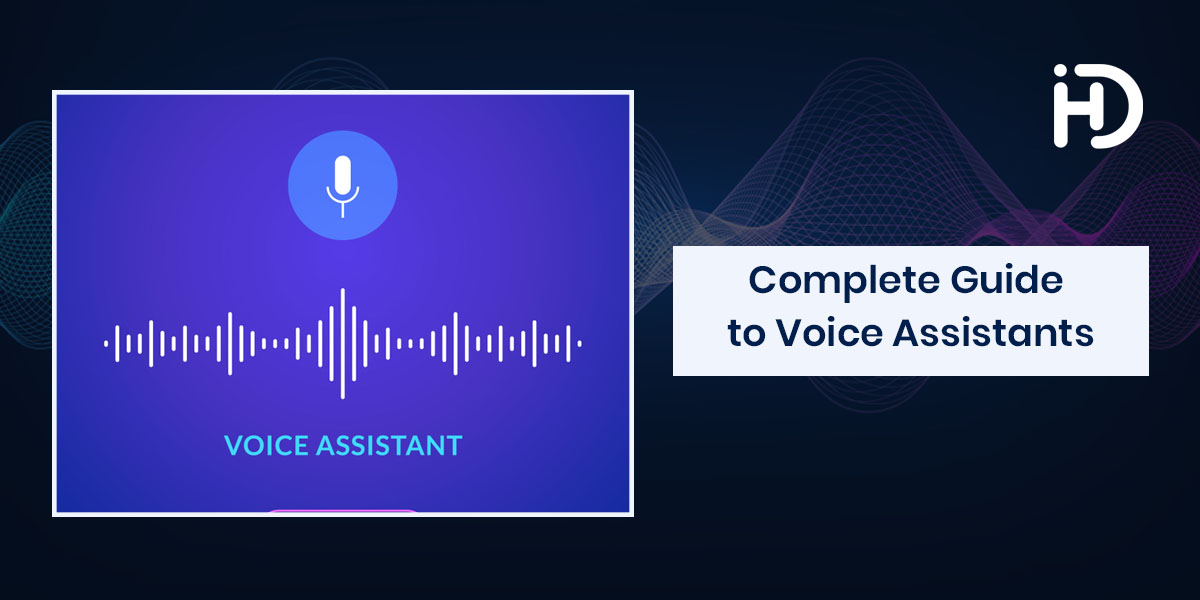Technology has advanced immensely from manual keyboards to completed automation like voice assistants. Artificial Intelligence advancements in the field of VAs such as Google Voice Assistant and Siri as we commonly know them today have helped set boundaries to field automation. Let’s take an in-depth look at them in detail.
What are voice assistants and what assistance do they provide?
Voice assistant or google voice assistant which we commonly know as google home or Alexa has become a huge part of our day-to-day life. We have become soo dependent on technology that survival without them seems impossible these days. Not just for office spaces, households, or shops, voice assistants have become a part of our personal computers, mobile phones, tablets, or any other devices that we could think of.
Voice Assistants are a subclass of the Virtual Assitance or more profoundly known as the personal assistance category. They are extremely easy to incorporate into our day-to-day life and work spaces and make our functionality easy.
The ways that voice assistants take input are divided into the following categories:
1) Input through Text
Some voice assistants like google voice assistant have the feature of taking input through text boxes provides.
2) Input through Voice
Voice assistants as the name suggests have a feature to also take input through voice. This is done through the microphone of the mobile and is very common in Siri, Google voice assistant, and Alexa.
3) Input through Image
This type of searching is called image searching where you can get desired results by searching or scanning a particular image. After this, the results are provided by voice assistants by reading them out loud to the user. Making the whole process seamless.
The voice assistants use mediums like speech recognition, NLP, and synthesis of the speech in the medium of input to detect and predict the output that is desired by the customer or user of this particular product.
Necessities of a good voice assistant
Not all voices make it to the victory podium of the voice assistant race. Certain characteristics are necessary for a voice to be selected for being inculcated as a voice assistant.
1) Voice as a medium and input
The primary need for any statements to produce an output is the requirement to make the voice assistants functional that the input type should be through the medium of voice.
2) The assistant should be conversational
The user should not feel that he talking to a computer. The voice assistant should be naturally programmed to make it conversational unlike most of us introverted folks out here!
3) The voice assistant should have strong conformity
The voice assistant should be able to take input from the user and strongly check and confirm and revert it to the user with the strictly relevant information.
Working model of Voice Assistants
Although they might be easy to operate, coding an assistant requires a whole task force. So have you ever questioned how your local Alexa, Siri, or Google Assistant can give back complex and if the question is irrelevant, witty answers to you? Let's clear the cloud of doubts. Breaking it down into simple points will make the process easy for you.
1) Text to Speech
Text to Speech is any software that takes in textual or verbal input and reads the output out loud. This is commonly known as Read Out Loud software and is used in a lot of mainstream software like Kindle to read out audiobooks sometimes.
2) Usage of Logic Hooks
Though these terms might seems immensely technological, they are extremely easy to understand. Logic Hooks mean that a particular function is triggered when a particular condition is met. There are many ways to put them into use and voice assistants use this to make their user experience better and faster.
3) Automatic Speech Recognition
Automatic Speech Recognition or ASR short is one of the primary pillars of Voice Assistant Technology. What it does is, allow the user to give input in terms of speech and give output accordingly. This is extremely helpful for users who do not know how to write or type and in cases where a person might not know the complete spelling of a certain word they might be finding the definition. All one needs is to speak to the assistant and all the answers are provided to you.
4) NLP
NLP is the short form of Natural Language Processing. There are five steps involved in this process. They are as follows:
-
Lexical Analysis
-
Parsing
-
Semantic Analysis
-
Discourse Integration
-
Pragmatic Analysis
This system is a sub-category of Virtual Assitance that uses complex
Artificial Intelligence functions and algorithms to solve complex problems that might seem like a chore to us humans.
NLP takes the input given by the user and converts it into a language that is easily understandable by the processing unit. This helps the system to save time in case of repetitive functioning
Hence it is easy to conclude that Voice Assistants have a bright future ahead and tend to explore new boundaries in the years to come.
Take A Glance
Harnil Oza is a CEO of HData Systems - Data Science Company & Hyperlink InfoSystem a top mobile app development company in Canada, USA, UK, and India having a team of best app developers who deliver best mobile solutions mainly on Android and iOS platform and also listed as one of the top app development companies by leading research platform.
